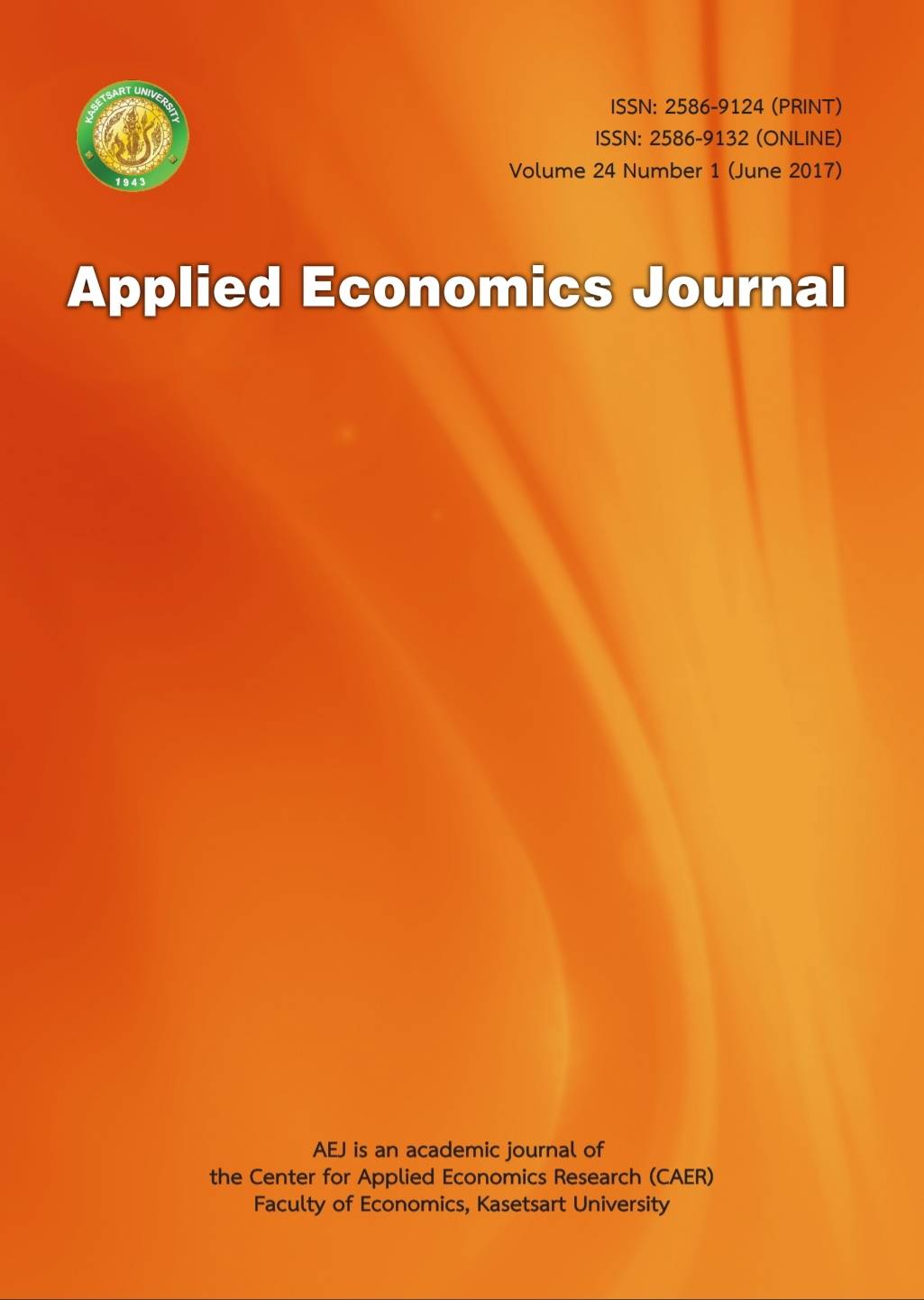Analysis of Long-Run Equilibrium Relationship of Non-Performing Loans
Main Article Content
Abstract
This study aims to analyze factors that determining non-performing loans (NPLs) in Thai economy. The factors are classified into two groups, they are macroeconomic and bank-specific variables. Moreover, this study will use the model to forecast NPLs outstanding. The results show that NPLs, GDP, real lending rate, CPI, unemployment rate, real effective exchange rate, capital adequacy ratio, and loans are I(1). The results of testing long-run equilibrium relationships by the method of Johansen (1995) show that there are two long-run equilibrium relationships. The first long-run equilibrium relationship represents for the long-run equilibrium relationship of NPLs of Thai Economy. The second long-run equilibrium relationship represents for the long-run equilibrium relationship of unemployment rate of Thai Economy. The results of Vector Error Correction Model (VECM) show that if the first long-run relationship is deviated from its long-run equilibrium, NPLs, CPI, real effective exchange rate, capital adequacy ratio and loans will adjust in the short-run to achieve long-run equilibrium. Whenthe second long-run relationship is deviated from its long-run equilibrium, GDP, unemployment rate and capital adequacy ratio will adjust in the short-run to achieve long-run equilibrium. The results of generalized impulse response indicate that impulse in macroeconomic or bank variables lead NPLs keep fluctuating in the next 20 months, then stable after that. This study uses Vector Error Correction Model to forecast NPLs from January 2001 – June 2016, the result gives 1.62% of Root Mean Square Percentage Error (RMSPE).
Article Details
The paper is published under CC BY-NC-ND, in which the article is freely downloaded and shared in its original form non-commercially and its citation details are identified.


